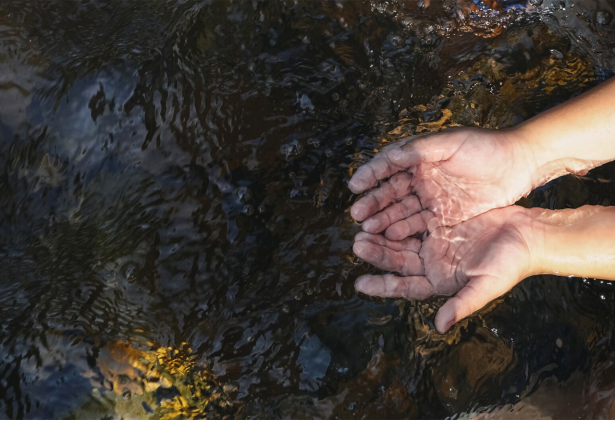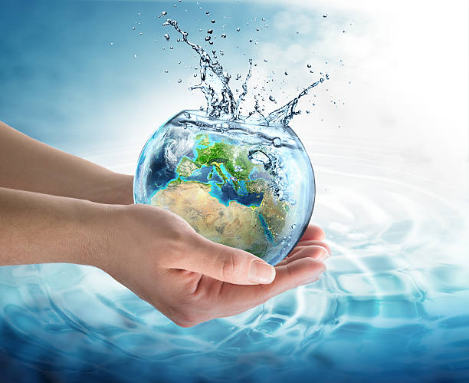When you're deep in nature, surrounded by forests, mountains, and streams, one essential need rises above the rest: clean drinking water. Whether you're on a short day hike or a multi-day backpacking trip, staying hydrated is critical to your health, energy, and safety.
But drinking untreated water from natural sources can expose you to dangerous bacteria, viruses, parasites, and harmful chemicals. In this guide, we’ll walk you through how to find clean water while hiking or backpacking, how to treat it safely, and what tools and techniques to carry for outdoor hydration.
1. Why You Can’t Drink Directly from Natural Sources

That crystal-clear mountain stream might look refreshing—but looks can be deceiving. Even the purest-looking water can be contaminated.
Common Contaminants in Natural Water:
- Bacteria (E. coli, Salmonella)
- Viruses (Norovirus, Hepatitis A)
- Protozoa (Giardia, Cryptosporidium)
- Heavy metals or chemicals from mining, agriculture, or runoff
Drinking untreated water can result in gastrointestinal illness, dehydration, or worse—spoiling your entire trip and putting your health at risk.
2. Best Natural Water Sources to Look For
When searching for a water source, prioritize flowing and clear water. Here’s what to look for:
Good Water Sources:
- Flowing streams or creeks (faster-moving water is less likely to contain pathogens)
- Springs (ideal when located at the source)
- Snow or ice (only if melted and treated properly)
- Rainwater (if collected cleanly)
Avoid These Sources:
- Stagnant ponds or swamps
- Water with algae blooms (may contain toxins)
- Downstream from farms, campsites, or animal activity
- Water that smells, has foam, or appears oily
3. Water Purification Methods for Hikers and Backpackers
Even if you find what looks like a clean water source, it’s critical to treat it before drinking. Here's how:
Boiling Water
- Kills bacteria, viruses, and protozoa
- Boil for at least 1 minute (or 3 minutes above 6,500 ft/2,000 m)
- Reliable, but requires fuel, time, and cooling
Water Filters
- Removes bacteria, protozoa, and sediment
- Lightweight pump, gravity, or straw-style filters
- Not all filters remove viruses—check specifications
Popular brands: Sawyer Mini, Katadyn BeFree, LifeStraw
Water Purification Tablets/Drops
- Chemical disinfectants (chlorine dioxide or iodine)
- Kills viruses, bacteria, and protozoa
- Lightweight and compact
- Downsides: wait time (30–60 minutes), may affect taste
UV Light Purifiers
- Uses ultraviolet light to destroy microorganisms
- Fast (works in ~90 seconds)
- Requires batteries or USB charge
Popular device: SteriPEN
Combination Methods
For high-risk areas (especially international travel), combine filter + chemical treatment or filter + UV to cover all threats
4. How Much Water to Carry While Hiking
General Rule:
0.5 to 1 liter of water per hour of moderate activity in moderate temperatures
In hot weather, high altitudes, or with heavy packs, you may need more than 1 liter per hour.
Tips:
- Start the hike fully hydrated
- Fill up at every clean water opportunity
- Use hydration bladders or bottles for easy access
Don’t wait until you're thirsty—dehydration sets in before you feel it.
5. Planning Ahead: Check Maps and Local Resources
Before your trip:
- Check trail maps and guidebooks for known water sources
- Read recent trip reports or forums (e.g., Reddit, AllTrails)
- Call rangers or park officials to ask about current water availability
In dry areas or during droughts, streams may dry up—always verify.
6. Safe Water Collection Techniques
- Use a pre-filter (coffee filter or bandana) to remove debris
- Collect water upstream of trails or campsites
- Avoid disturbing sediment or muddy banks
- Always treat the water before consuming
If using a water filter or pump, backflush or clean the filter as recommended to maintain flow rate and effectiveness.
7. Emergency Water Sources and Survival Tips
If you run out of treated water and don’t have purification tools:
- Boil water if you can build a fire
- Solar disinfection (SODIS): Fill a clear plastic bottle, leave in the sun for 6+ hours (not 100% reliable but better than nothing)
- Use charcoal and sand to make a basic DIY filter (must still be boiled or treated)
Avoid drinking untreated water unless absolutely necessary—dehydration is dangerous, but waterborne illness can be worse in remote areas.
8. Eco-Friendly Practices While Collecting Water

Don’t contaminate water sources—never wash dishes, clothes, or yourself directly in streams
- Carry dirty water at least 200 feet away before using soap
- Use biodegradable soap sparingly
- Always follow Leave No Trace principles
Protecting water sources ensures clean water for wildlife, future hikers, and the ecosystem.
9. Final Thoughts: Be Prepared, Stay Safe
Clean water is a non-negotiable on any hike or backpacking trip. The key to staying hydrated and healthy outdoors is planning, preparation, and proper water treatment.
Whether you're hiking in the Rockies, camping in a national park, or trekking through the jungle, knowing how to find and purify water safely is one of the most valuable wilderness skills you can have.
- l ways treat natural water sources
- Carry multiple purification methods
-Drink often and stay hydrated
Nature can be unpredictable—but your water supply shouldn’t be.
--------------------------------------------------------------------------------------------------------------
SANAKY VIETNAM., CO LTD - Manufacturer of Chest Freezer - Upright Cooler, Transformer, RO Water Purifier...
Website: www.sanaky-vn.com
 Vietnamese
Vietnamese  English
English  Chinese
Chinese  French
French  Spanish
Spanish  Russian
Russian  Arabic
Arabic  Portuguese
Portuguese